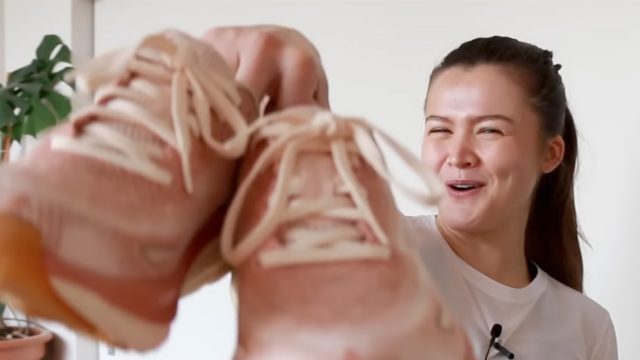She Walked 30,000 Steps for a Week and Discovered Something Unexpected
Sometimes, the simplest changes lead to the most profound discoveries. Like many of us, fitness enthusiast Makari Espe found herself going through daily motions, counting steps but not feeling their impact. With over 140,000 YouTube subscribers watching her journey, she decided to challenge herself with an ambitious goal: 30,000 steps every day for a week. What she discovered went far beyond physical fitness – and might change how you think about your daily walk.
Day 1: Beginning the Journey
"I woke up feeling excited but nervous about committing to 30,000 steps every single day," Makari shares in her post. The first day started with a brisk morning walk around her neighborhood, followed by several walking breaks throughout her workday. "By evening, I had only reached 15,000 steps and realized I needed to completely restructure my daily routine to make this work," she admits.
The Essential Preparation
Reality hit quickly, and Makari knew she needed a strategy. "I laid out my walking clothes the night before and planned my routes in advance," she explains. "Having the right shoes and comfortable clothing made a huge difference in my motivation to get started each day." She also emphasizes the importance of proper fueling: "I started carrying a water bottle and healthy snacks because these long walks required more energy than I initially expected."
Finding an Unexpected Rhythm
The breakthrough came when Makari discovered her perfect walking pattern. "I started breaking up my steps into three main chunks – morning, afternoon, and evening walks," she explains. Then something unexpected happened: "What surprised me most was how my mind started to clear during these long walks. It became almost meditative," she reflects.
RELATED: Nutritionist Fixed Her Gut Health and Lost Weight With These 8 Simple Changes
The Social Discovery
An unexpected benefit emerged when Makari started incorporating social elements into her walks. "I began inviting friends for walking meetings and catch-up sessions," she says. "These social walks not only made the time more enjoyable but also helped strengthen my relationships. Some of my most meaningful conversations happened during these walks."
Weathering the Challenges
Not every day brought perfect walking conditions. "There were rainy days where I had to get creative," Makari shares. "I discovered that shopping malls and indoor tracks could be excellent alternatives. I even paced around my house during phone calls to keep the steps going." She emphasizes adaptability: "The key is to adapt rather than give up when conditions aren't ideal."
The Physical Transformation
By day four, unexpected physical changes became noticeable. "My posture improved significantly, and I felt less stiff in the mornings," Makari notes. "The constant movement helped with my previous lower back pain, which I didn't expect." The benefits extended beyond movement: "I started craving more nutritious foods naturally, and my mid-afternoon energy slumps disappeared."
The Mental Clarity Breakthrough
The most surprising changes weren't physical at all. "Walking became my thinking time. I solved work problems, processed emotions, and came up with creative ideas during these long walks," she says. "It's like each step helped clear away mental clutter. I found myself feeling more emotionally balanced and less reactive to daily stresses."
RELATED: Coach Dropped 15 Pounds After Fixing These 8 Mistakes
Tracking the Transformation
While the step count mattered, other metrics revealed bigger surprises. "I experimented with different apps and devices to track my steps," Makari explains. "But the most valuable metrics weren't just the steps – I started noting my mood, energy levels, and sleep quality too. The holistic improvements were remarkable."
Building Sustainable Habits
The challenge revealed truths about habit formation. "While 30,000 steps daily might not be realistic long-term, this challenge taught me the value of consistent movement," she reflects. "I learned to integrate walking into my daily life naturally, whether it's taking the stairs, parking farther away, or having walking meetings."
The Final Revelation
By the end of the week, Makari discovered something profound. "My legs were tired, but my mind was stronger," she reveals. "By the end of the week, I wasn't just walking to hit a number – I was walking to experience life more fully." The impact went beyond physical results: "This experience showed me that sometimes the simplest activities can have the most profound impact on our wellbeing."
RELATED: 10 Protein Mistakes Keeping Your Body Fat High, Top Coach Says
Your Journey Begins Here
Makari's final insights focus on personalization. "You don't have to start with 30,000 steps – start where you are and gradually increase," she suggests. "The most important thing is to begin moving with intention and stay consistent." Her unexpected discovery speaks to a universal truth: "It's not just about physical movement – it's about moving forward in life with purpose and awareness. Every step is a step toward better physical and mental health." And if you enjoyed this article, don't miss 12-3-30 Walking Method: 20 Proven Tips to Lose Weight Faster.





